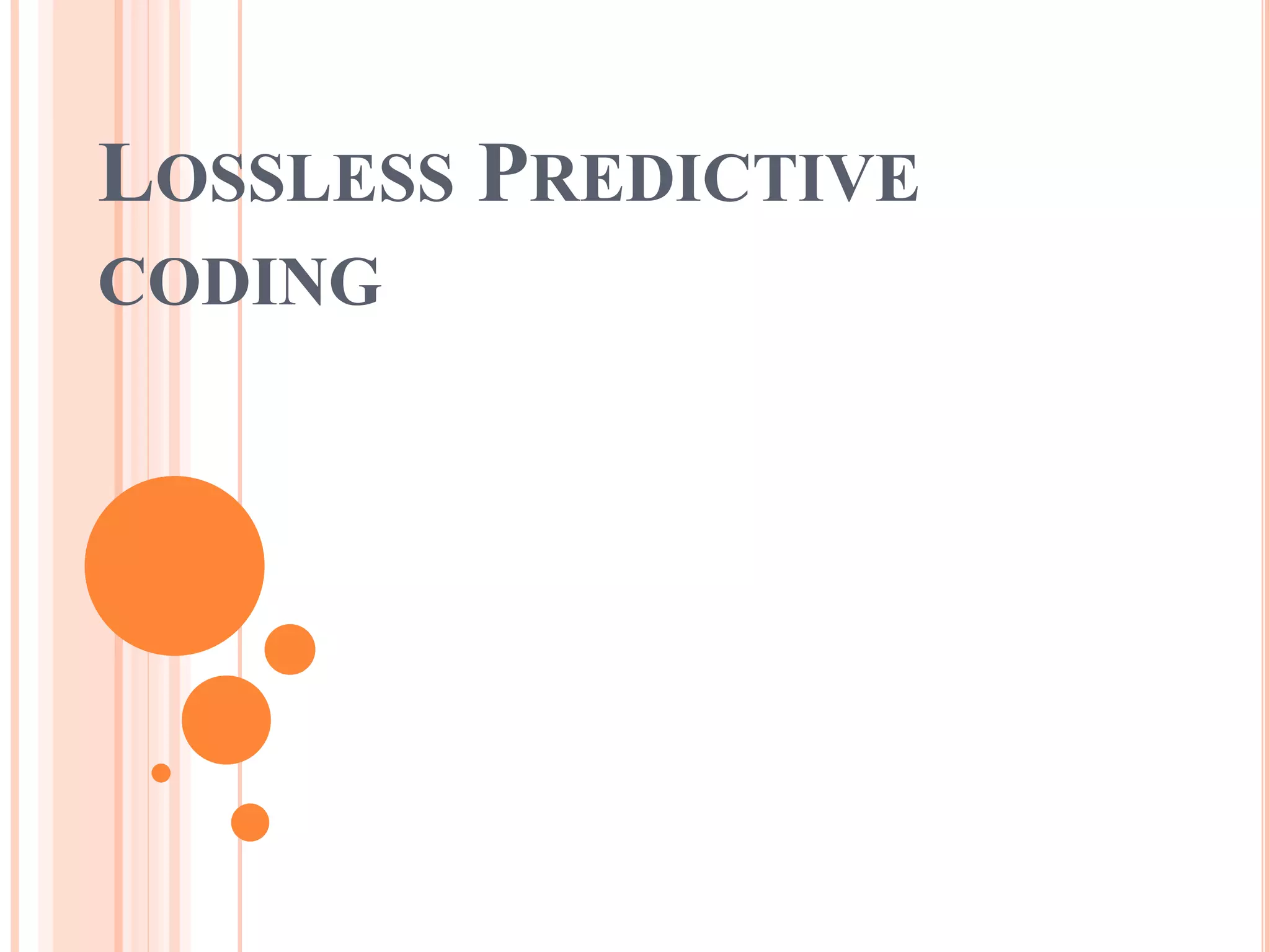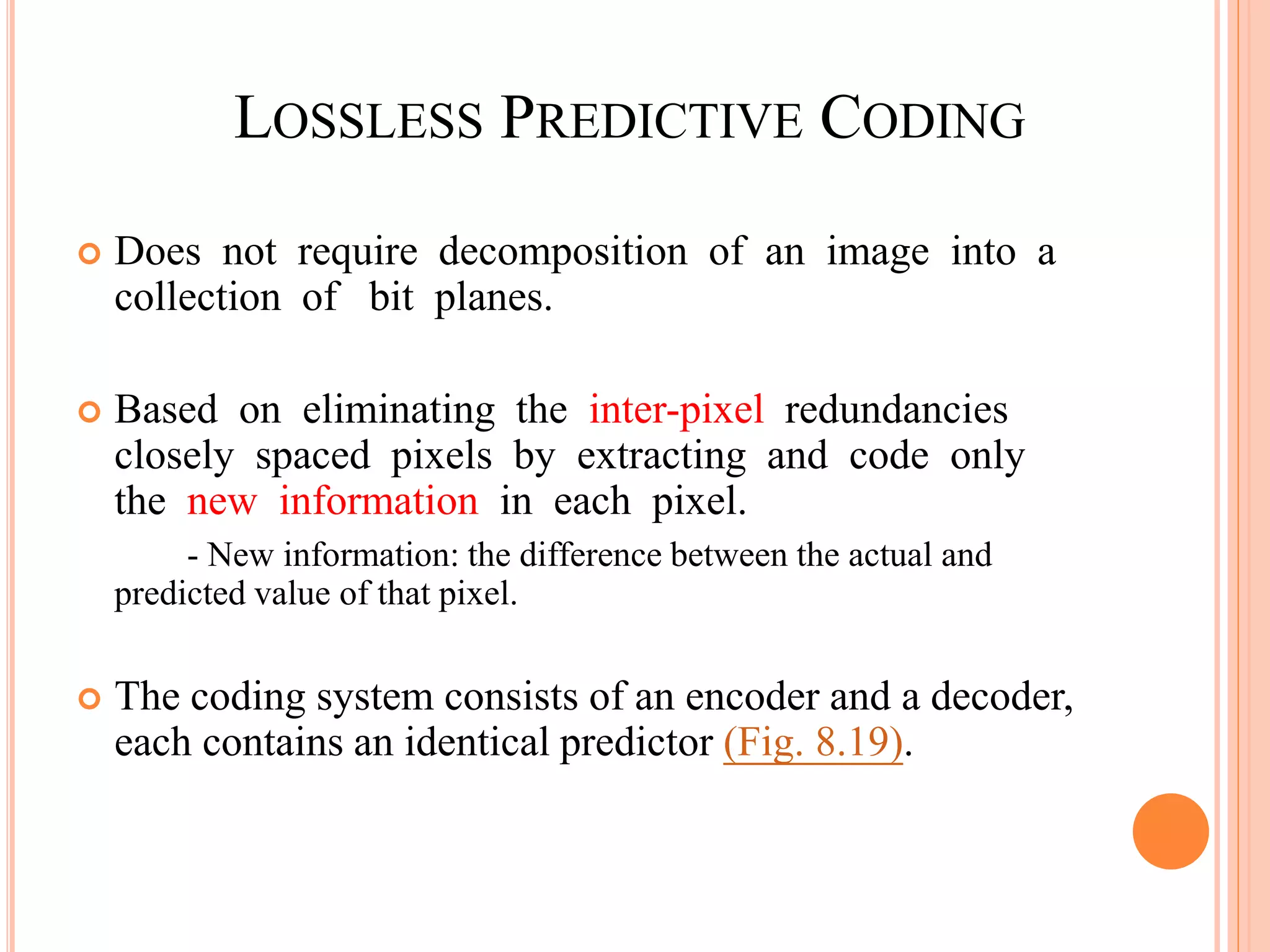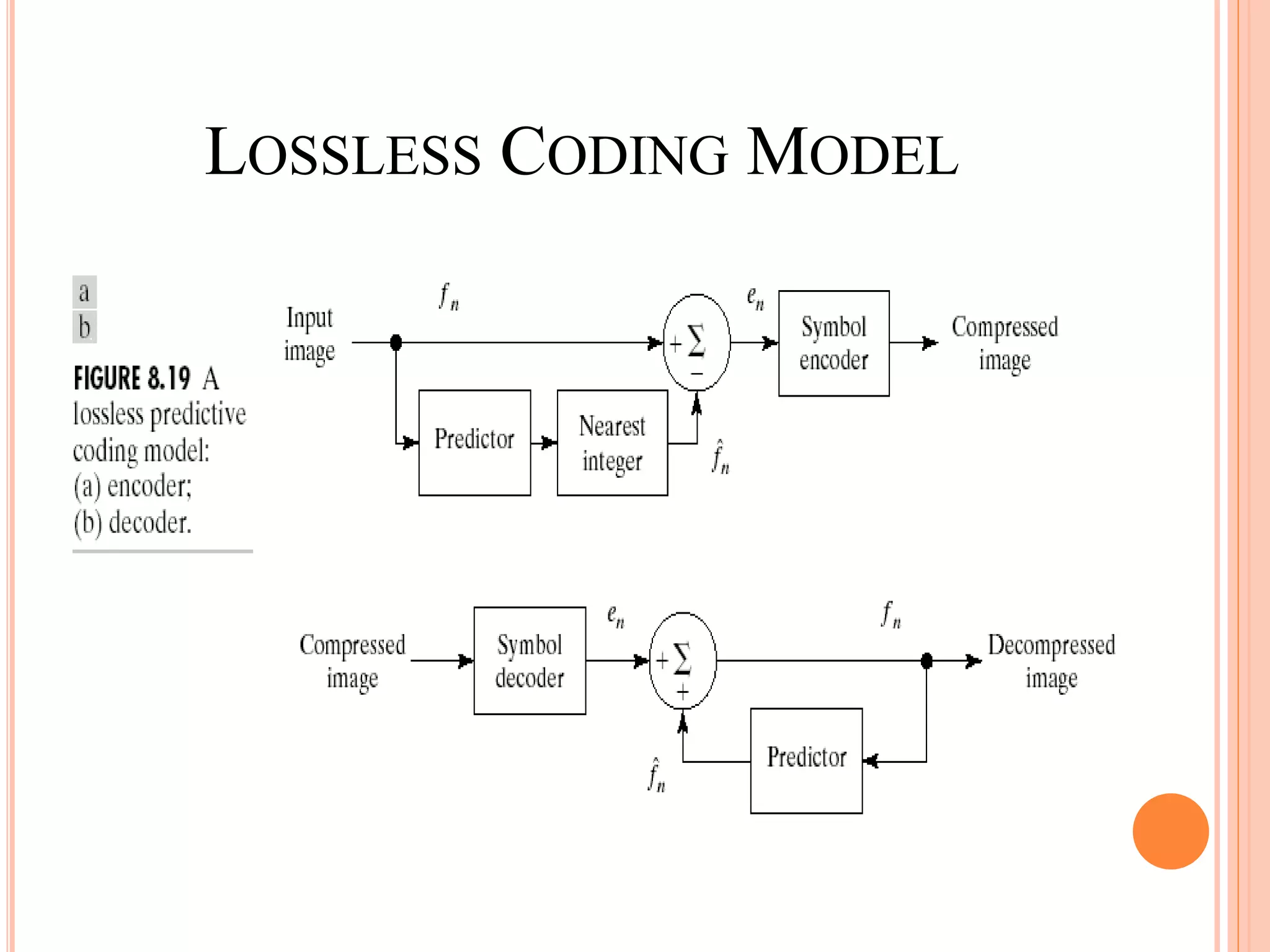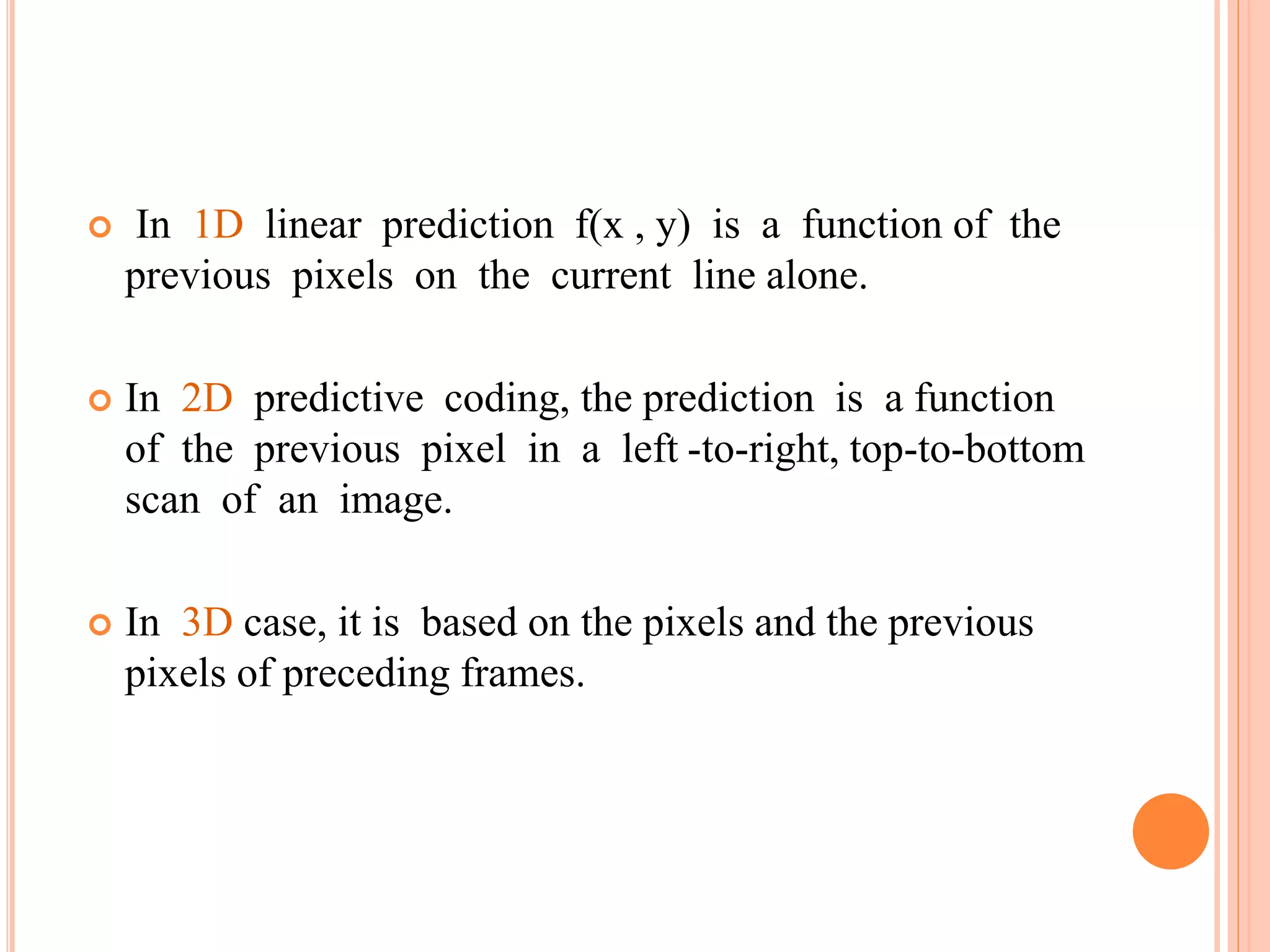Downloaded 198 times







Lossless predictive coding eliminates inter-pixel redundancies in images by predicting pixel values based on surrounding pixels and encoding only the differences between actual and predicted values, rather than decomposing images into bit planes. The coding system consists of identical encoders and decoders that each contain a predictor. The predictor generates an anticipated pixel value based on past inputs, the difference between actual and predicted values is variable-length encoded, and the decoder uses the differences to reconstruct the original image losslessly.







Introduction to lossless predictive coding, focusing on inter-pixel redundancy elimination and the use of a predictor in coding.
Details on the predictive coding model, explaining how anticipated pixel values are generated and the functions of 1D, 2D, and 3D predictive coding.
Conclusion of the presentation, with a thank you note.